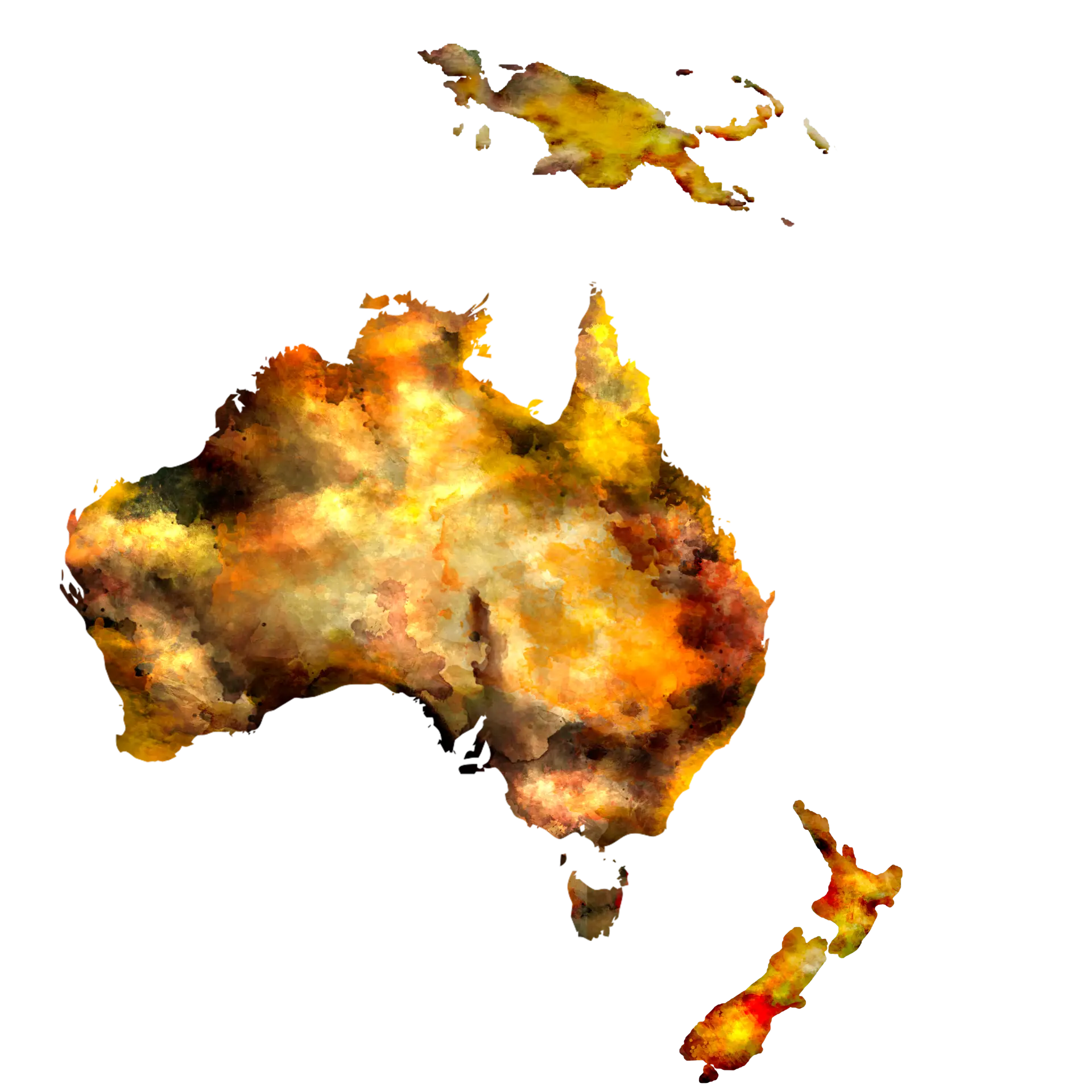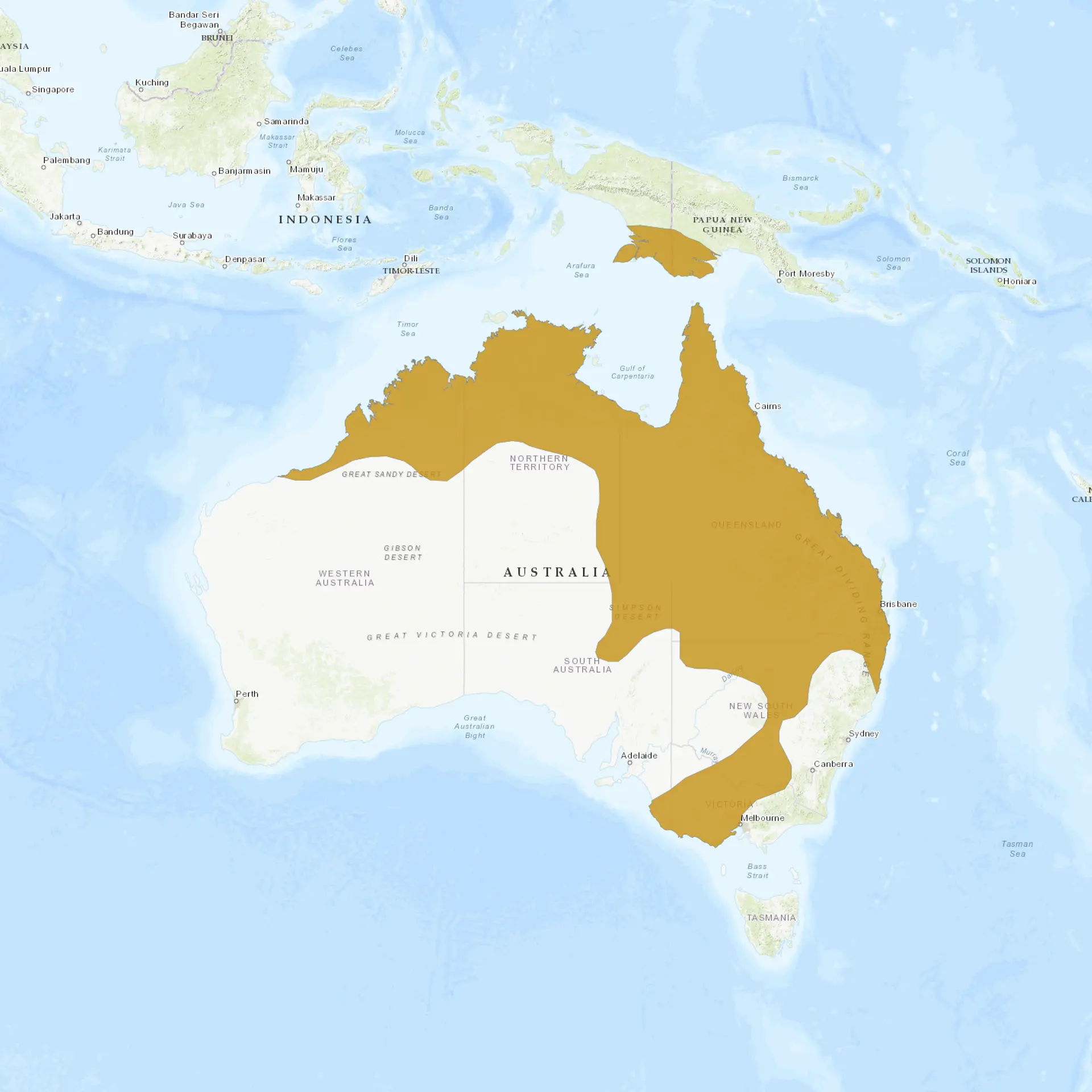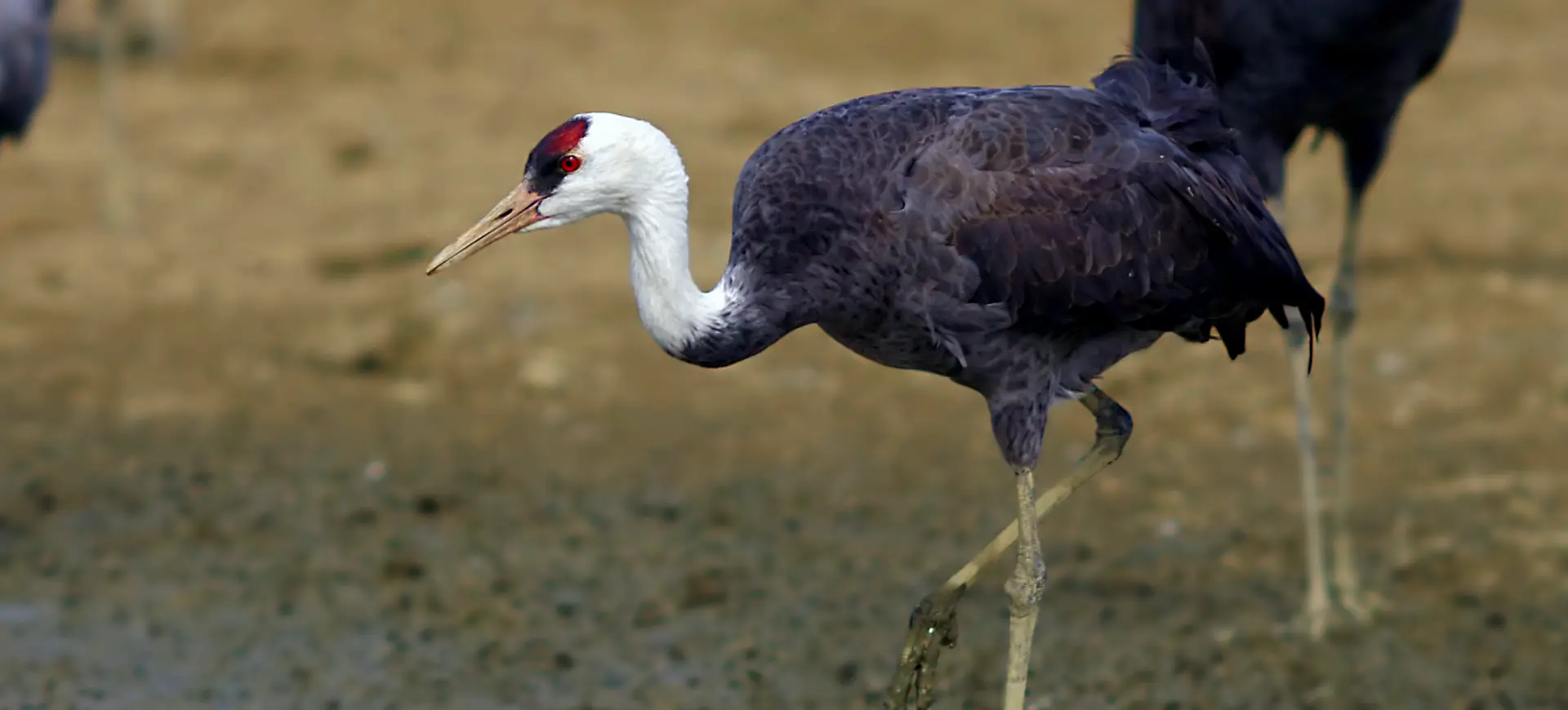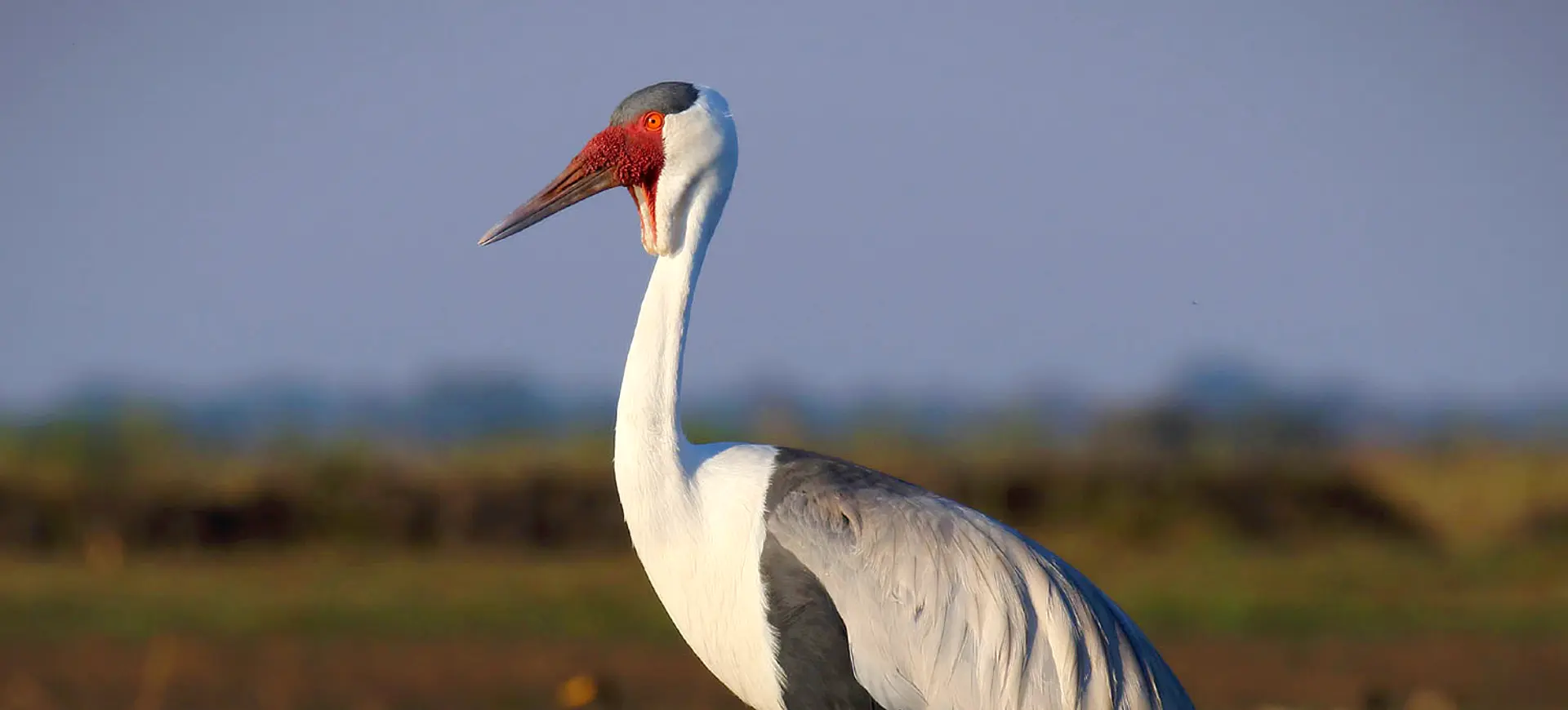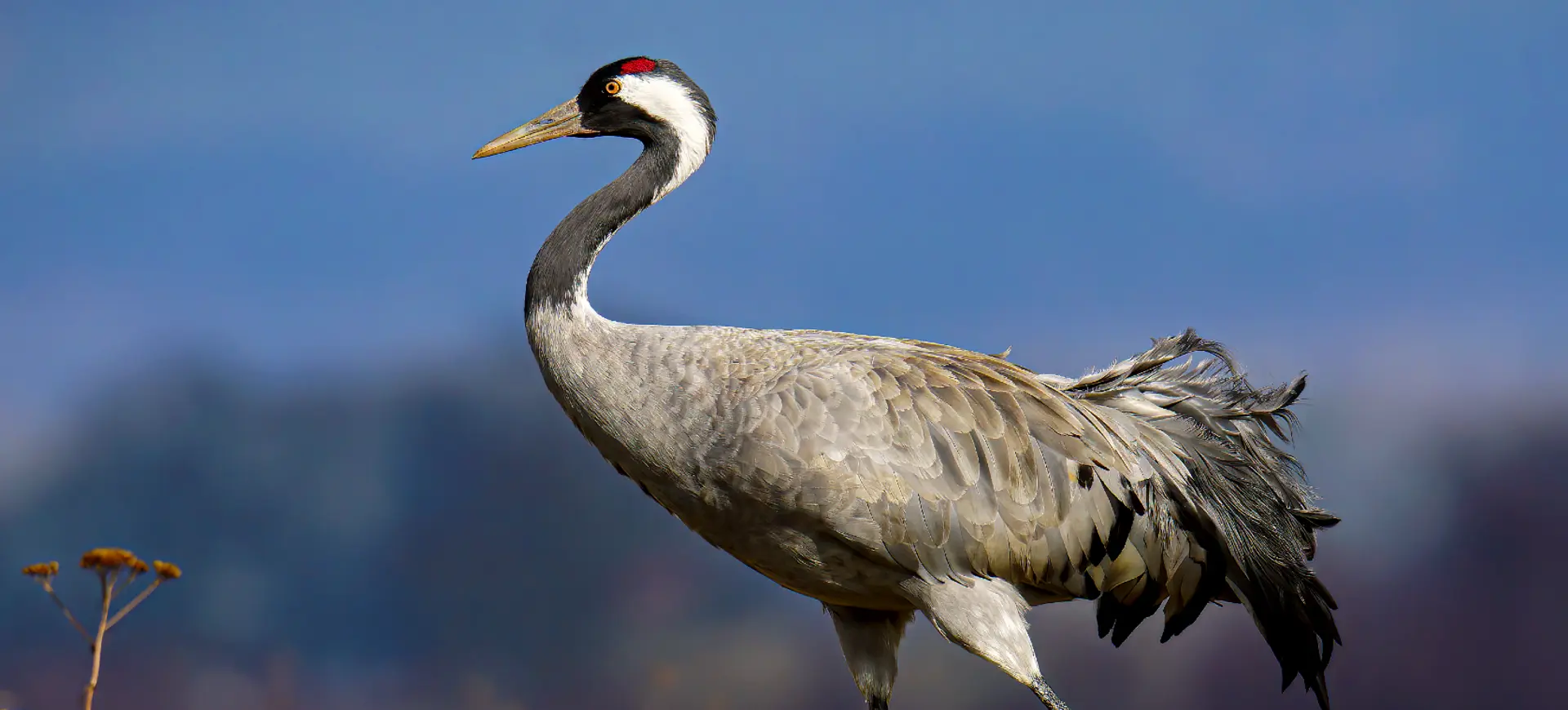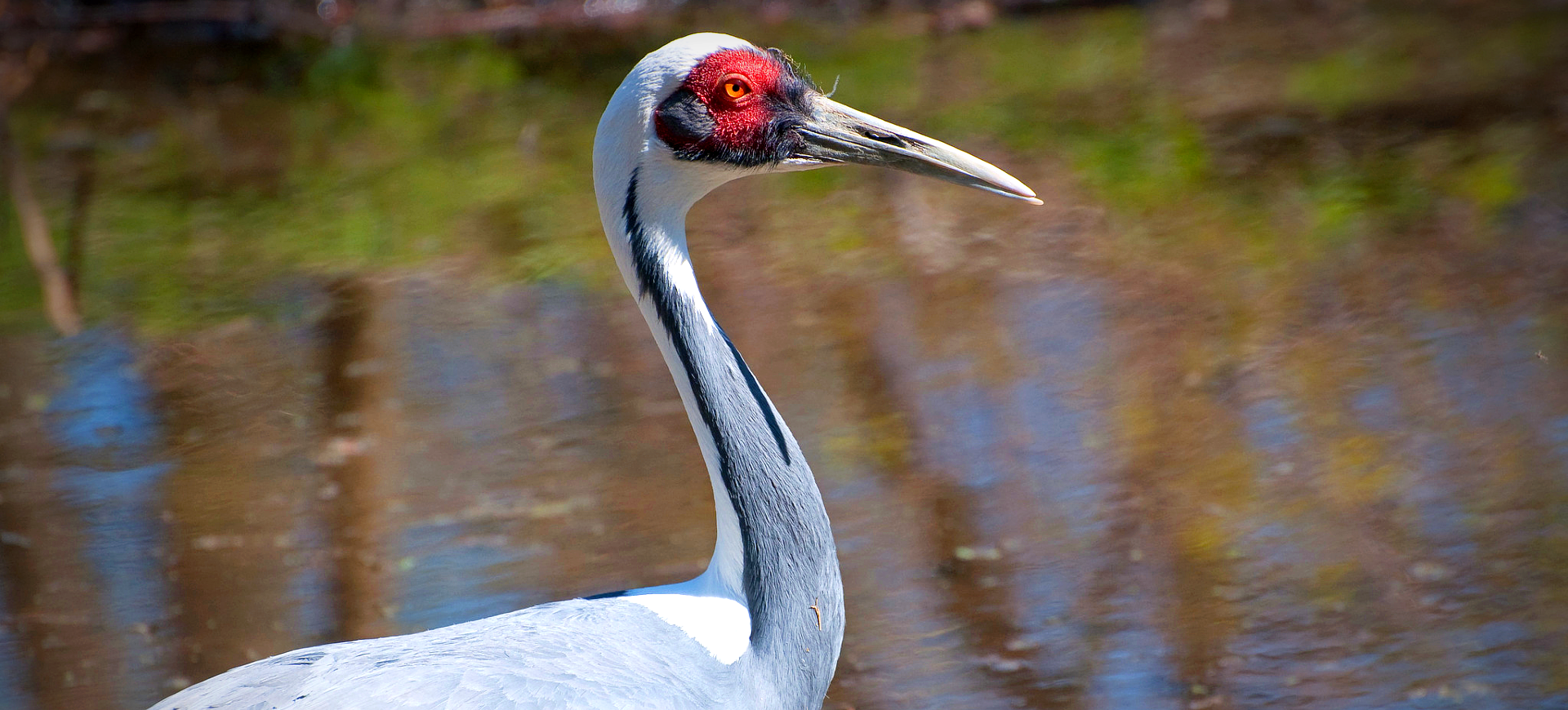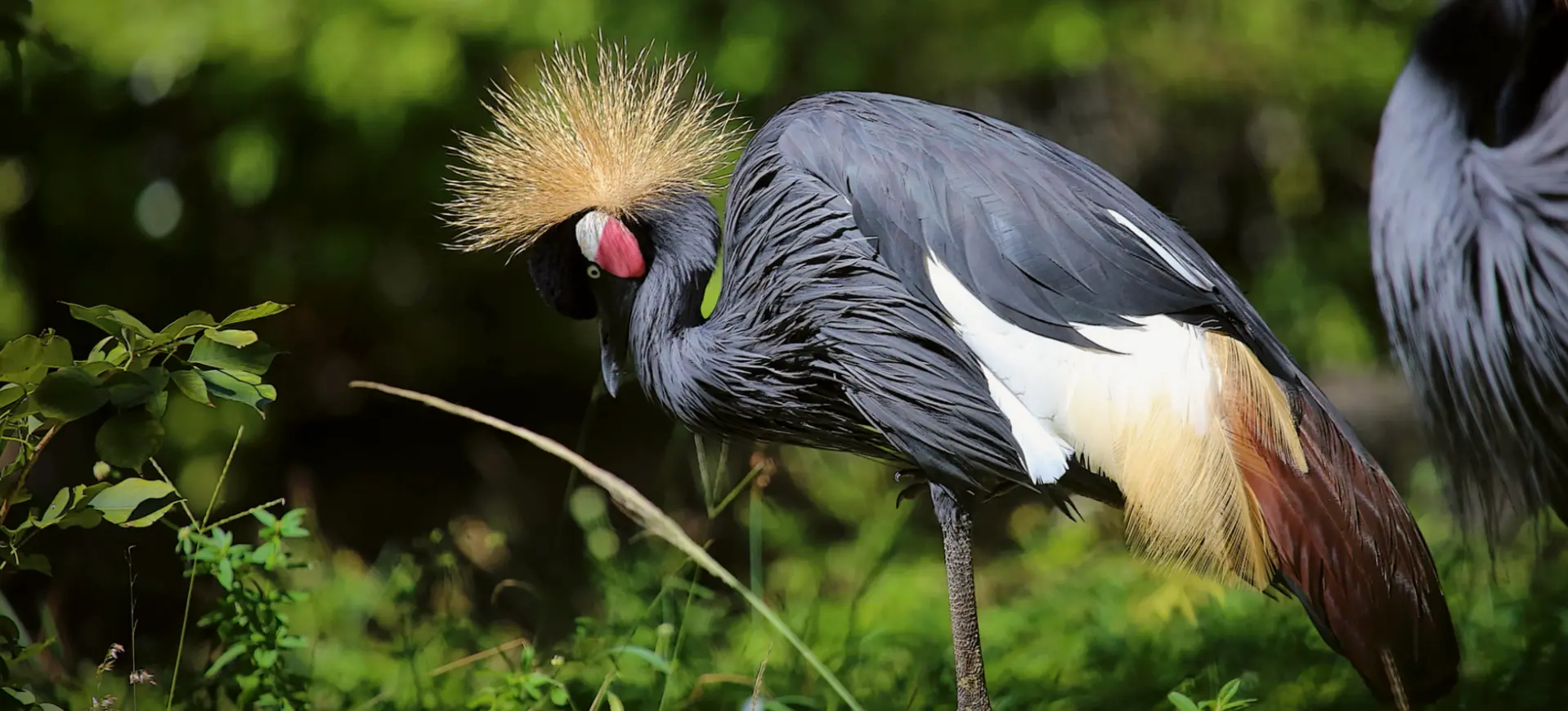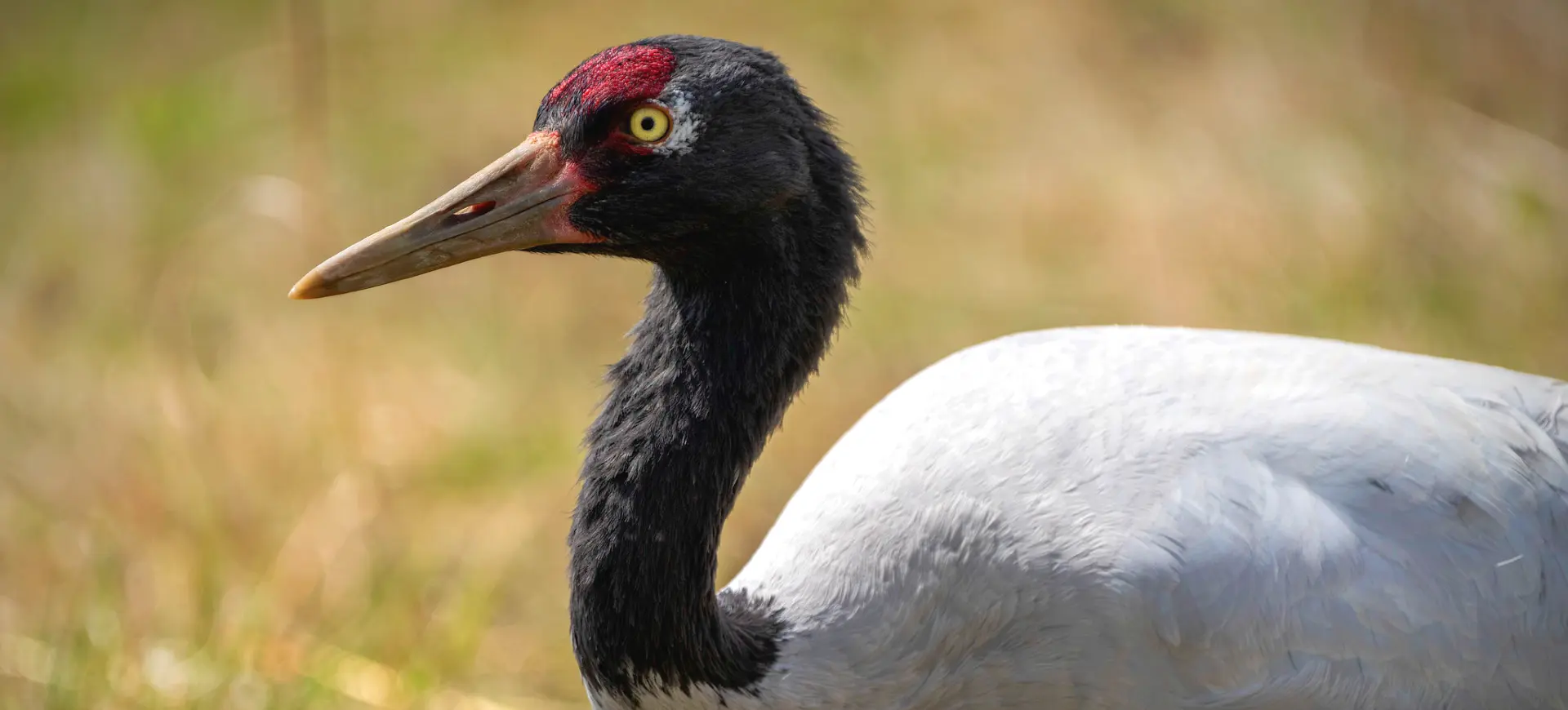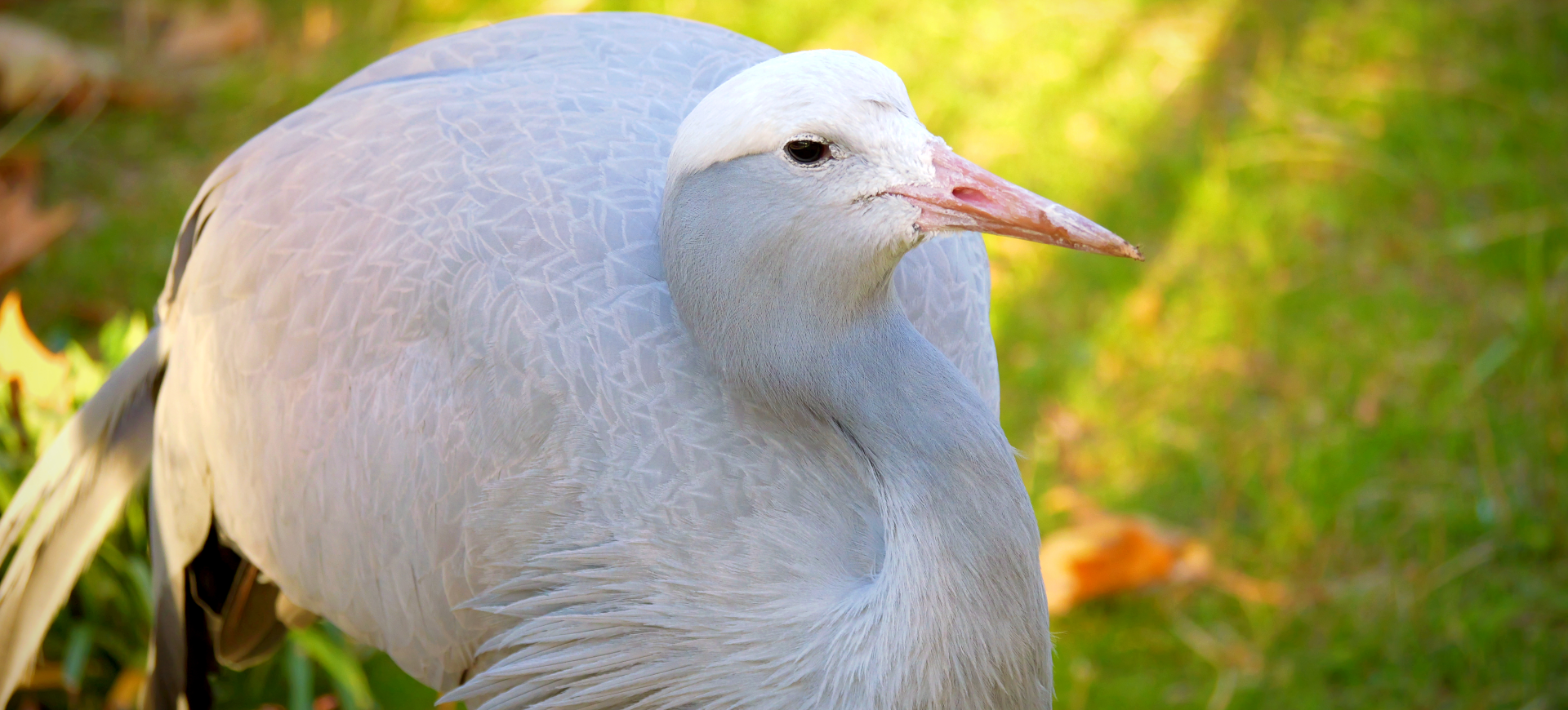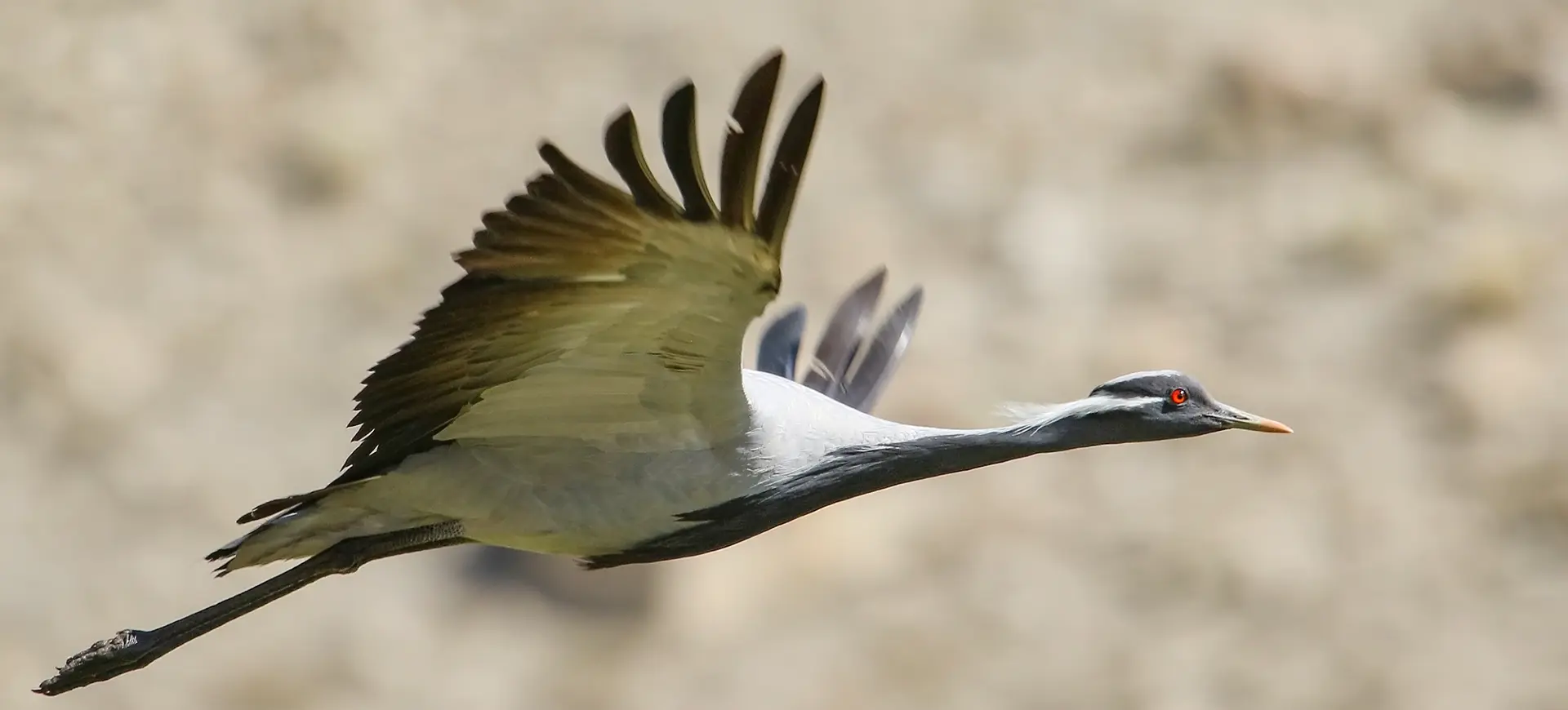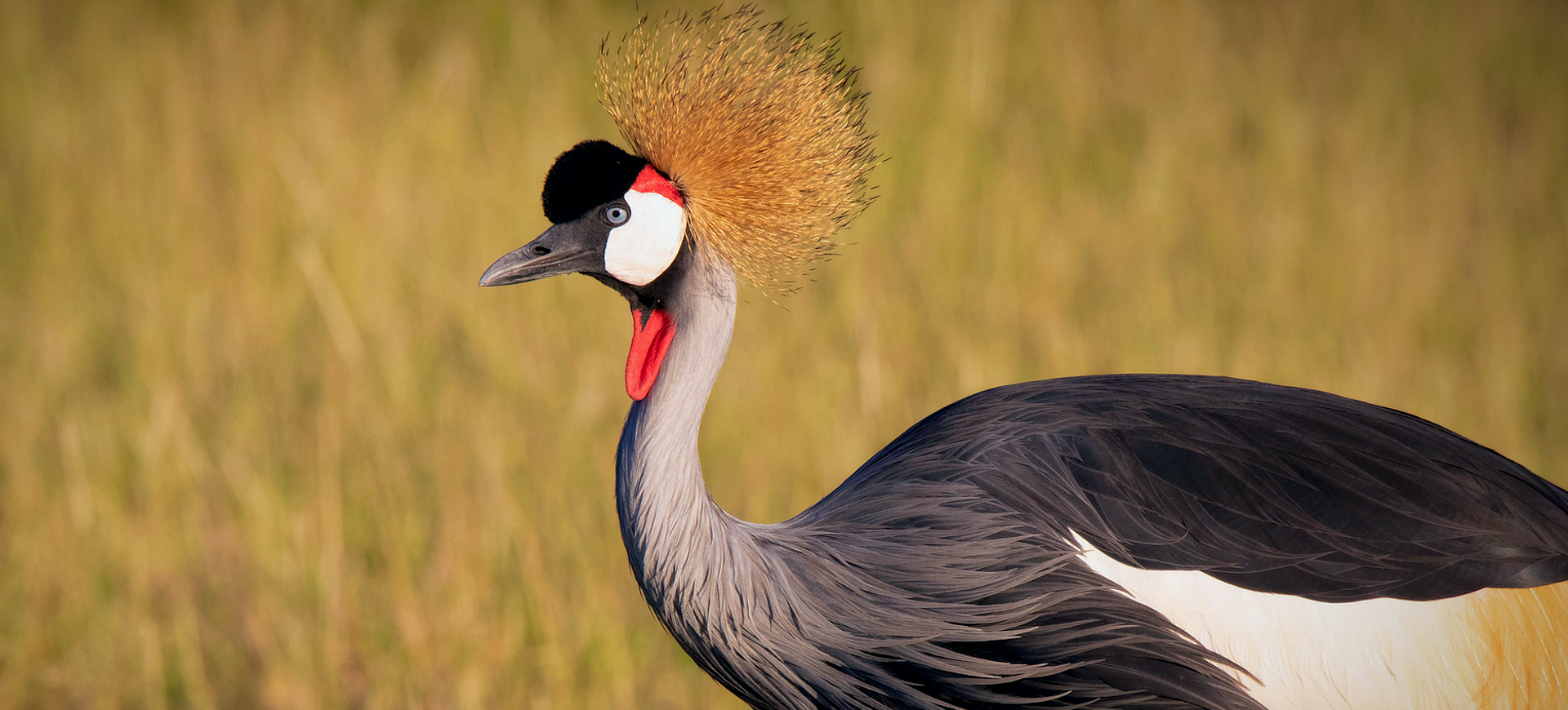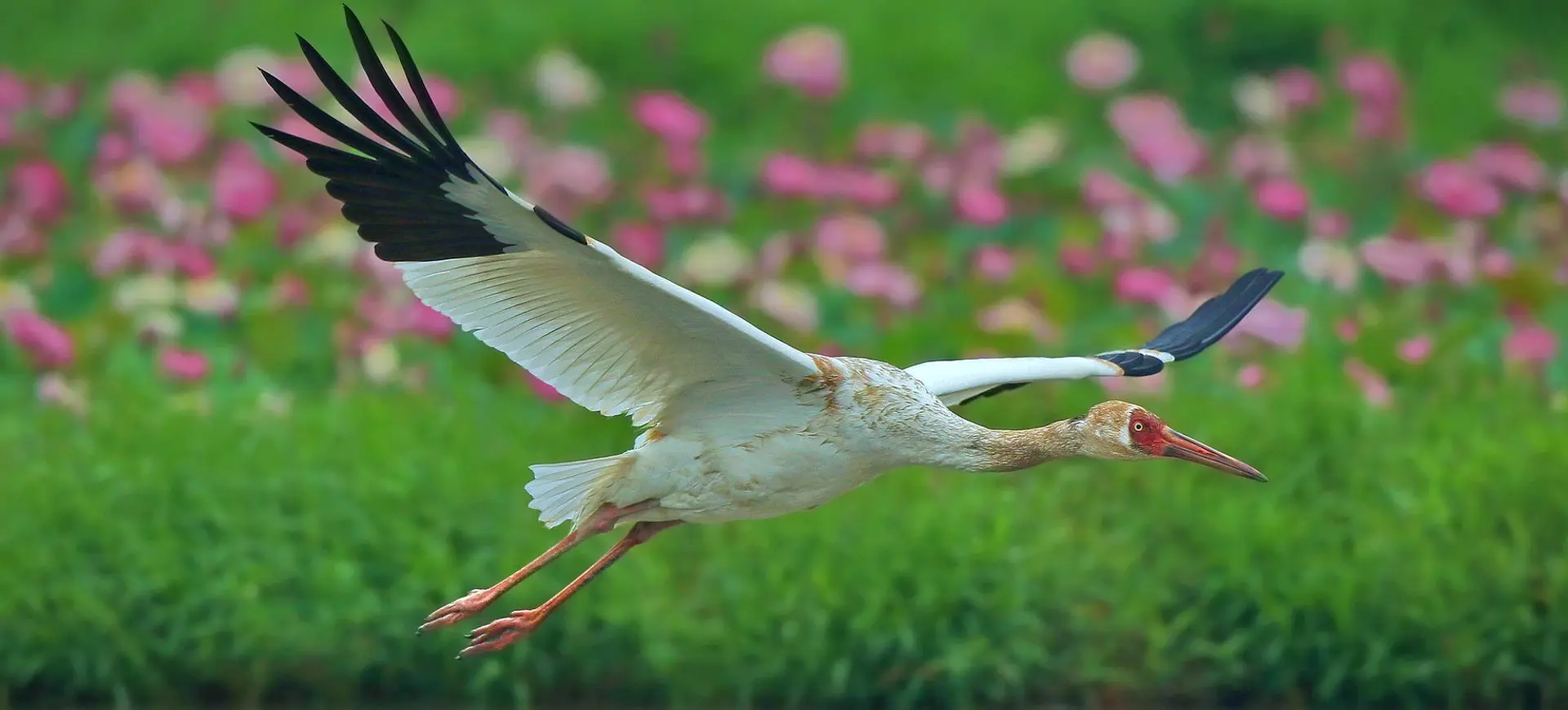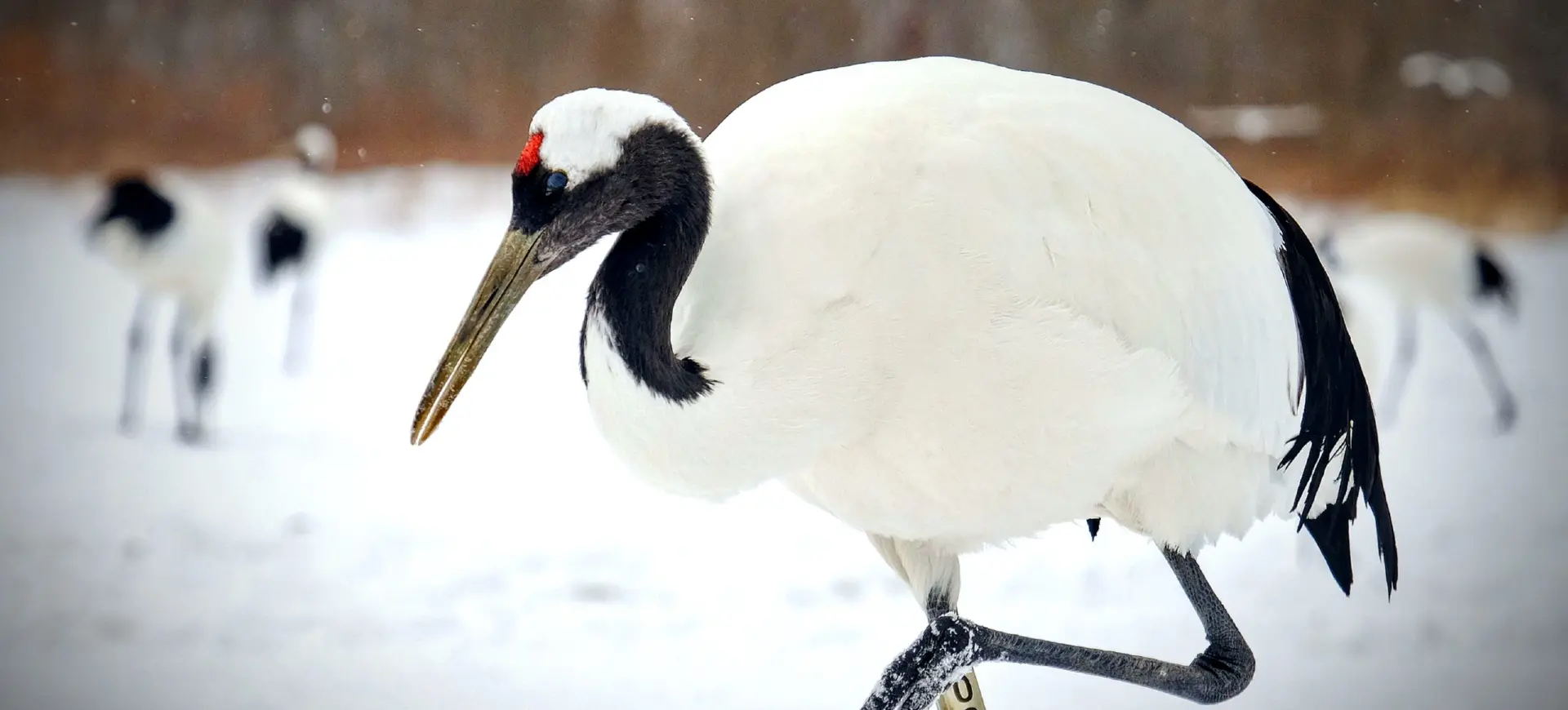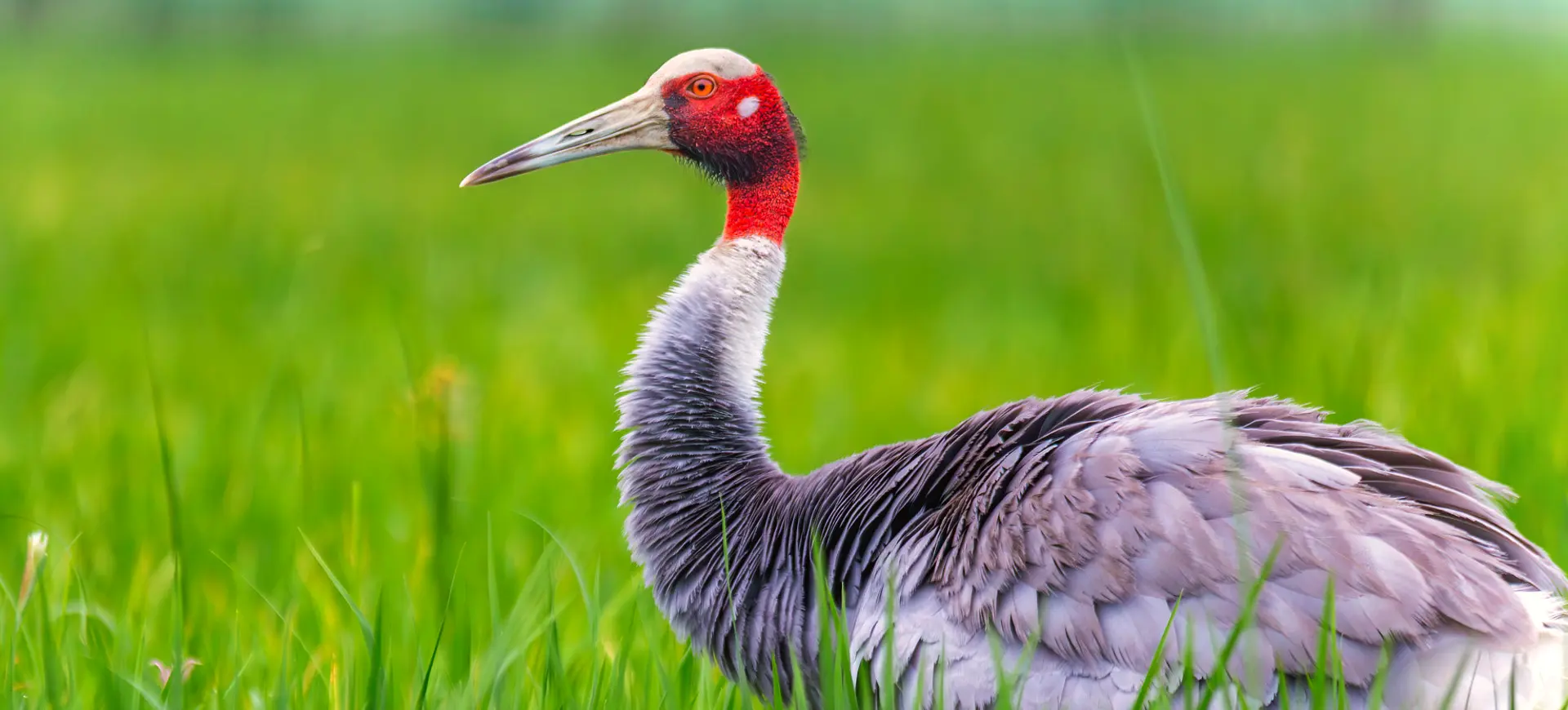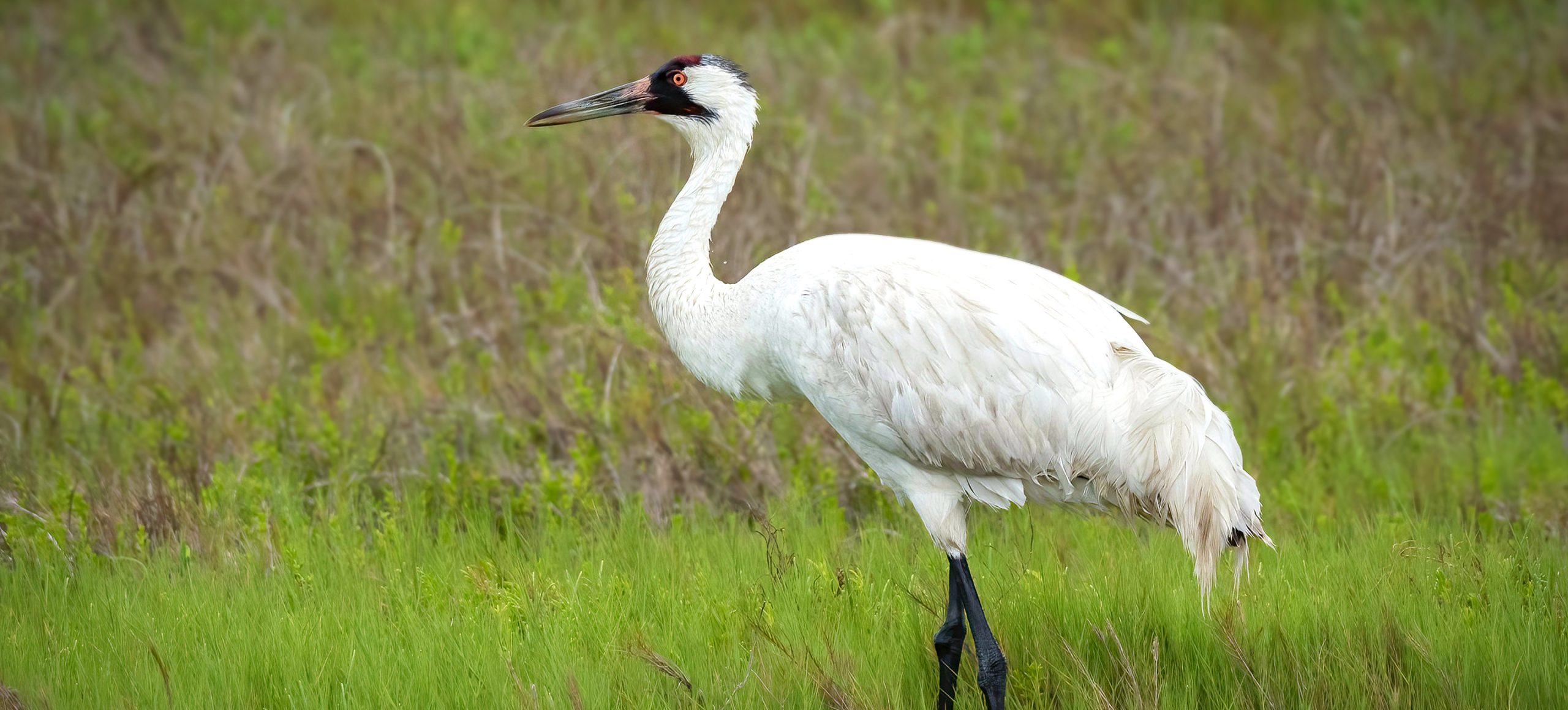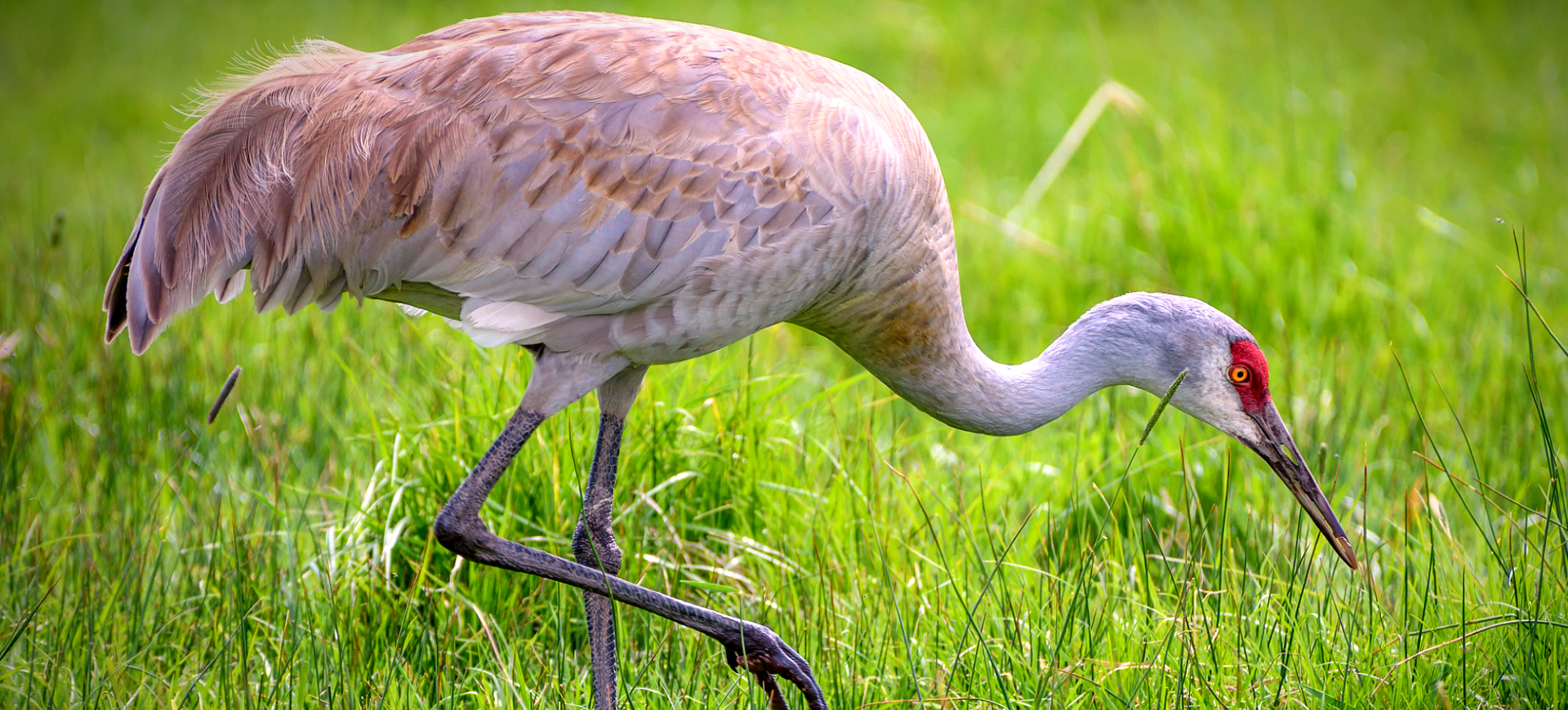Overview
The Brolga (Antigone rubicunda) is a large, grey crane native to Australia and New Guinea. Recognizable by its red head and grey body, it is known for its striking dance, which involves leaping, wing-flapping, and trumpeting calls. Brolgas inhabit wetlands, floodplains, and grasslands, where they feed on a diverse diet. They are social birds, often seen in pairs or small groups, particularly during the breeding season.
Brolgas are notable for their elaborate courtship dances, strengthening pair bonds and playing a crucial role in mating rituals. They build their nests in shallow wetlands, constructing mounds of vegetation. During the breeding season, they exhibit strong territorial behavior, defending their nesting sites from intruders. Outside the breeding season, they form larger flocks, including hundreds of individuals.
Brolgas’ diet is varied and consists of plant material, insects, small vertebrates, and invertebrates. They are opportunistic feeders, adapting their diet based on the seasonal availability of food. In agricultural areas, they are known to feed on crops, which sometimes brings them into conflict with farmers. Despite this, they play an important ecological role in their habitats, contributing to seed dispersal and controlling insect populations.
Taxonomy
Kingdom
Phylum
Class
Order
Family
Genus
Species
Type
Current distribution:
Brolgas are widely distributed across northern and eastern Australia, with smaller populations in New Guinea. In Australia, they are most commonly found in Queensland, Northern Territory, and New South Wales. They migrate seasonally, moving between wetland breeding sites and drier feeding grounds. The availability of water and food resources influences their distribution.
During the wet season, they concentrate on wetlands for breeding; in the dry season, they disperse to grasslands and agricultural areas. Some populations in southern Australia are more sedentary, remaining in the same areas year-round. Brolgas have a fragmented distribution in some regions due to habitat loss and human activities. Efforts to protect their habitats are crucial for maintaining their populations.
Physical Description:
Brolgas are tall birds, standing about 3.3 to 4 feet (100 to 120 cm), with a wingspan of approximately 5.5 to 7 feet (170 to 210 cm). Their plumage is primarily grey, with a distinctive red band of skin on the head and a dark grey crown. The legs and feet are dark grey to black and have a long, straight bill adapted for foraging. Juveniles have a more brownish plumage and lack the red coloring on the head.
Adults display a striking, elongated neck and an upright posture, which aid in scanning their environment for food and predators. Their wings are broad and strong, allowing for powerful flight over long distances during migration. Brolgas’ eyes are yellow, providing keen vision. They are also known for their loud, trumpeting calls, which are used for communication within flocks and during courtship displays.

Lifespan: Wild: ~20 Years || Captivity: ~40 Years

Weight: Male & Female: 13-16 lbs (6-7 kg)

Length: Male & Female: 31-47 in (80-120 cm)

Height: Male & Female: 39-47 in (100-120 cm)

Wingspan: Male & Female: 67-83 in (170-210 cm)

Top Speed: 35 mph (56 km/h)
Characteristic:
Native Habitat:
Brolgas are found in various wetland habitats, including freshwater marshes, floodplains, and shallow lakes. During the wet season, they prefer areas with abundant water and vegetation for nesting. These wetlands provide a rich source of food and nesting materials. In the dry season, they migrate to more arid regions, including grasslands and agricultural fields, where water is still available.
Brolgas are also adaptable to human-altered environments, often seen in rice paddies and other irrigated fields. They require large, open areas for their elaborate courtship dances and social interactions. Their habitat needs include feeding and roosting sites, which are crucial for their survival. Conservation of their habitats is vital, as they rely on specific wetland conditions for breeding and foraging.
Biomes:
Biogeographical Realms:
Countries:
Diet:
Diet & Feeding Habits:
Brolgas are omnivores, consuming a wide range of food items based on availability. In wetlands, they feed on aquatic plants, seeds, tubers, insects, mollusks, and small vertebrates. They often forage in shallow water, using their long bills to probe the mud for food. During the dry season, they may move to grasslands and agricultural fields, where they feed on grains, nuts, and crops like rice and sorghum.
Their foraging behavior is versatile, including digging, gleaning, and capturing small prey with their beaks. Brolgas are known to exploit human-altered landscapes, which sometimes leads to conflict with farmers. They often feed in pairs or family groups during the breeding season but can form large flocks outside this period. This social foraging helps them locate food more efficiently and provides safety in numbers.
Mating Behavior:
Mating Description:
Brolgas are monogamous, forming long-term pair bonds that often last for life. Their courtship displays are elaborate, involving synchronized dancing, trumpeting calls, and intricate movements. These displays strengthen the pair bond and play a key role in mate selection. Brolgas build their nests in shallow wetlands, using vegetation to create a platform above the water.
The female typically lays two eggs, and both parents share incubation duties, which last about 28 to 31 days. After hatching, the chicks are precocial and leave the nest within a day, though they remain under parental care for several months. The family unit stays together throughout the breeding season, with the chicks learning essential survival skills from their parents. Fledging occurs around three months, but juveniles may stay with their parents until the next breeding season.
Reproduction Season:
Birth Type:
Pregnancy Duration:
Female Name:
Male Name:
Baby Name:
Social Structure Description:
Brolgas are social birds, often seen in pairs or small family groups during the breeding season. Outside the breeding season, they form larger flocks, including hundreds of individuals. These flocks provide several benefits, including increased foraging efficiency and predator protection. Communication within flocks involves a range of vocalizations and visual displays.
During the breeding season, pairs exhibit strong territorial behavior, defending their nesting sites from other cranes and potential predators. In non-breeding season flocks, social interactions are complex and involve hierarchical structures based on age and experience. Understanding these social dynamics is important for conservation efforts, particularly where human activities impact their natural behaviors. The social nature of Brolgas plays a crucial role in their survival and reproductive success.
Groups:
Conservation Status:
Population Trend:
The Brolga population is considered stable, with an estimated 100,000 individuals in the wild, though there could be as few as 20,000. They are widely distributed across their range, though some populations are fragmented due to habitat loss and human activities. Conservation efforts have helped maintain stable populations in many areas. However, continued monitoring and habitat protection are essential to prevent future declines.
About 300 individuals are in captivity, housed in various zoos and conservation centers. Captive breeding programs aim to support wild populations by providing valuable data on the species’ biology and behavior. These programs also raise awareness about Brolgas’s conservation needs. Efforts to reintroduce captive-bred individuals into the wild are ongoing, though challenges remain due to habitat requirements and social behaviors.
Population Threats:
Habitat loss and degradation are the primary threats to Brolgas. Wetland drainage, agricultural expansion, and infrastructure development reduce the availability of suitable breeding and foraging sites. Human disturbances, such as livestock grazing and tourism, can also impact their habitats. Climate change poses additional risks by altering wetland hydrology and affecting food availability.
Conflict with farmers over crop damage is another significant threat. Brolgas feeding on crops can lead to persecution and habitat loss. Conservation efforts must address these threats through habitat protection, sustainable land-use practices, and community engagement. International cooperation is important, particularly in regions where Brolgas migrate and cross borders.
Conservation Efforts:
Various conservation initiatives aim to protect Brolgas and their habitats. These include establishing protected areas, such as national parks and nature reserves, in key breeding and feeding regions. Community-based conservation programs involve local people in protecting crane habitats and promoting sustainable agricultural practices. Education and awareness campaigns help reduce human disturbances and promote coexistence.
Research and monitoring programs provide critical data on Brolga ecology, migration patterns, and population dynamics. Satellite tracking and field surveys inform conservation strategies and policy decisions. Captive breeding and reintroduction efforts are part of the broader conservation approach, though challenges remain. International collaboration among governments, NGOs, and research institutions is essential for the long-term survival of Brolgas.
Additional Resources:
Fun Facts
- Brolgas are known for their spectacular courtship dances involving leaping, bowing, and trumpeting.
- They are one of the tallest flying birds in Australia.
- Brolgas have a distinctive red band of skin on their heads, which is more pronounced during the breeding season.
- They are skilled flyers, capable of covering long distances during migration.
- Brolgas can live up to 40 years in captivity, much longer than in the wild.
- They are adaptable birds, often exploiting human-altered landscapes for feeding.
- Brolgas are featured in Aboriginal mythology and are an important cultural symbol in Australia.
- They have a loud, trumpeting call that can be heard over long distances.
- Both parents share the responsibility of incubating eggs and caring for chicks.
- Brolgas play a key role in their ecosystems by dispersing seeds and controlling insect populations.

